
Sand and gravel materials can generally be divided into two categories: machine-made sand and natural sand. Before batching, the sand needs to be classified according to the particle size, and then batched according to production requirements. In the production of sand and gravel, the sand linear vibrating screen is an indispensable screening equipment. After the machine-made sand is crushed, the coarse particles larger than 5mm need to be removed first, and then the sand is divided into coarse, medium and fine grades of different particle sizes. Sand is used for ingredients. In the process of designing the sand and gravel production line, the industry output is generally relatively large, and the ordinary single sand linear vibrating screen cannot meet its high output requirements, and can only be achieved with multiple sets. In large and medium-sized sand and gravel production lines, 4-6 screening devices are generally required. Even small sand and gravel production lines require at least two sand linear vibrating screen devices.
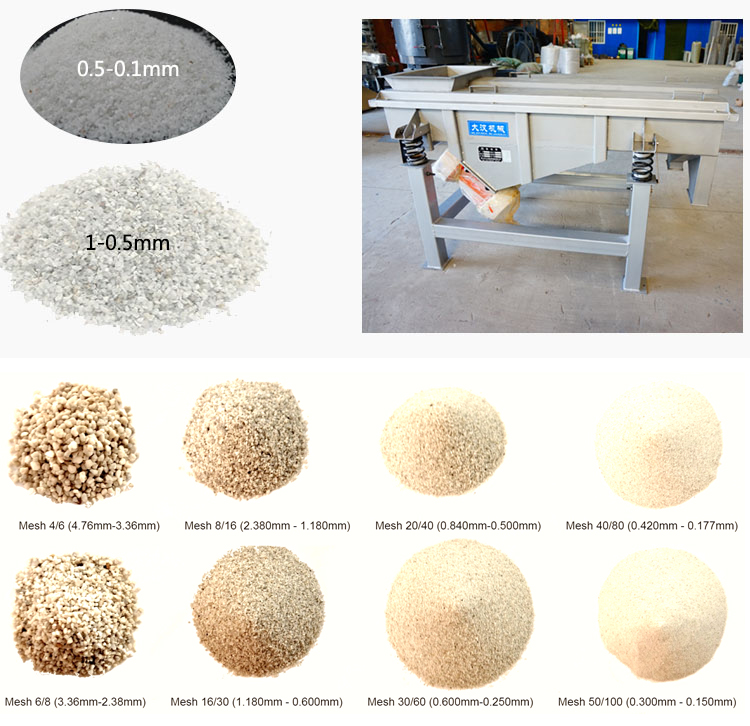
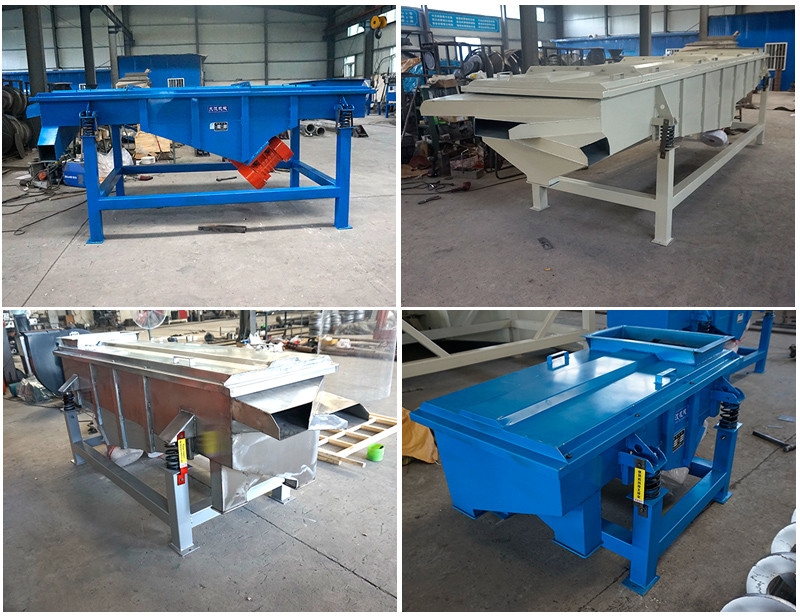
Sand linear vibrating screen can not only be used for grading and screening of finished sand and gravel, but also can be used to screen the materials crushed by primary crushing equipment and secondary crushing equipment. After the screening is distinguished, the belt conveyor can be connected with the host equipment to form a closed loop. In the sand and gravel production line, multi-layer sand linear vibrating screens are generally used in parallel operation, which can screen the materials at one time, save a lot of production time, and meet the needs of the finished aggregate shape.
The stone is initially crushed by the coarse crusher, and then the coarse material is conveyed by the belt conveyor to the fine crusher for further crushing. The finely crushed stone enters the sand linear vibrating screen to screen out two types of stone. The stone that meets the feed particle size of the sand making machine enters the sand making machine to make sand, and the other part is returned to the fine crusher. Part of the stone entering the sand making machine is made into sand, which is cleaned by the sand washing machine to become finished sand, and the other part enters the sand machine for further crushing. Its functions include:
1. Classification: Screen and classify the particles in the raw materials according to their size, and separate particles of different particle sizes. The finished coarse materials generally have 4 mesh, 8 mesh, 16 mesh, 30 mesh, 50 mesh, 80 mesh, 100 mesh, and 140 mesh. The screening accuracy is > 90%, and the particle size of the same specification is required to be uniform and neat, without large particles and fine powder.
2. Remove impurities: Remove impurities: It can effectively remove impurities, foreign matter and other unnecessary substances in the sand, and improve the quality and purity of the sand.
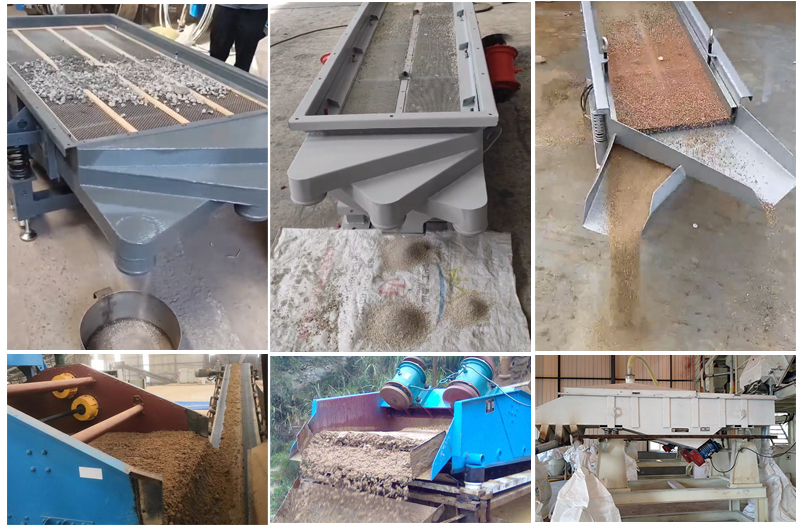
| Mesh Number | Microns | Material |
| 28 | 700 | Course Sand |
| 60 | 250 | Fine Sand |
| 325 | 44 | Silt |
| 400 | 37 | Pollen |
| 12000 | 12 | Red Blood Cells |
| 48000 | 2 | Cigarette Smoke |

Sand linear vibrating screen is driven by dual vibration motors. When the two vibration motors rotate synchronously and in opposite directions, the exciting force generated by the eccentric blocks cancels each other out in the direction parallel to the motor axis, and superimposes a resultant force in the direction perpendicular to the motor axis, so the motion trajectory of the screen machine for a straight line. The two motor shafts have an inclination angle in the vertical direction relative to the screen surface. Under the combined force of the exciting force and the self-gravity of the material, the material is thrown on the screen surface to jump or move forward in a straight line, so as to achieve the purpose of screening and grading the material. .
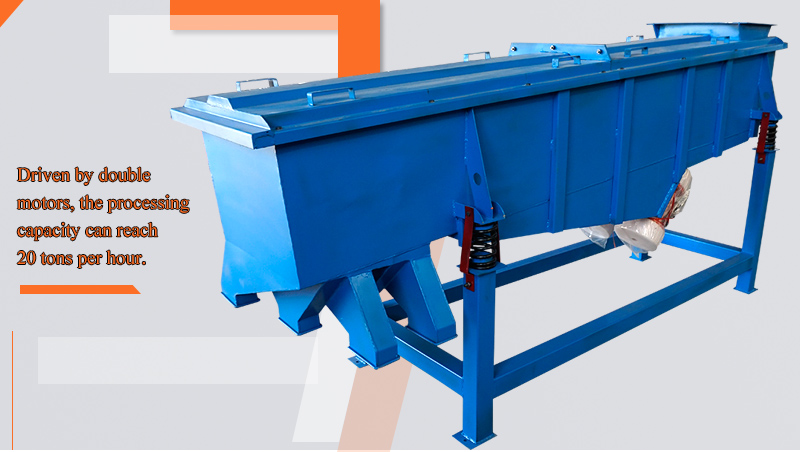
1. It can not only screen the sand and gravel production line of various materials, but also screen wet materials.
2. It can screen 6 layers at the same time, and it can sort out 7 kinds of sand of different specifications, and there will be no phenomenon of mixing and bunching. It can be used as an ideal screening equipment for rough sand selection.
3. Driven by double motors, the processing capacity can reach 20 tons per hour.
4. Adding a feeding buffer can reduce the damage of sand to the sieve plate, and at the same time make the feeding more uniform.
| Model | Layer |
Screening Area (mm) |
Mesh Size (mesh) |
Particle Size (mm) |
Capacity (t/h) |
Power (kw) |
Vibration Direction Angle (°) |
Screen Inclination (°) |
Dual Amplitude |
| DZSF-520 | 1-6 layers | 500*2000 | 2-400 | 0.074-10 | ≤3 | 0.37×2 | 45-60 | 0-7 | 3-4.5 |
| DZSF-525 | 500*2500 | ≤5 | 0.37×2 | ||||||
| DZSF-612 | 600*1200 | ≤8 | 0.37×2 | ||||||
| DZSF-1020 | 1000*2000 | ≤12 | 0.75×2 | ||||||
| DZSF-1025 | 1000*2500 | ≤16 | 0.75×2 | ||||||
| DZSF-1030 | 1000*3000 | ≤20 | 1.1×2 | ||||||
| DZSF-1224 | 1200*2400 | ≤23 | 1.5×2 | ||||||
| DZSF-1525 | 1500*2500 | ≤28 | 1.5×2 | ||||||
| DZSF-1530 | 1500*3000 | ≤32 | 2.2×2 |
The mesh size required for the sand linear vibrating screen varies depending on the type and purpose of the sand. The following are some common types of sand and their corresponding mesh ranges (for reference only, the specific mesh needs to be determined according to actual needs):
1. Construction sand
Coarse sand: Mainly used for concrete aggregate, the mesh is generally 5-20 mesh.
Medium sand: Used for plaster mortar, masonry mortar, etc., the mesh is generally 20-40 mesh.
Fine sand: Used for plastering mortar, decorative mortar, etc., the mesh is generally 40-80 mesh.

2. Casting sand
Molding sand: Used for casting molds, the mesh is determined according to the precision requirements of the casting, generally 40-100 mesh.
Core sand: Used for inner cavity molding of castings, the mesh is generally 80-200 mesh.
3. Glass sand

Glass raw material sand: The purity requirements are high, the mesh is generally above 100 mesh, and even up to 325 mesh.
4. Sand for filtration
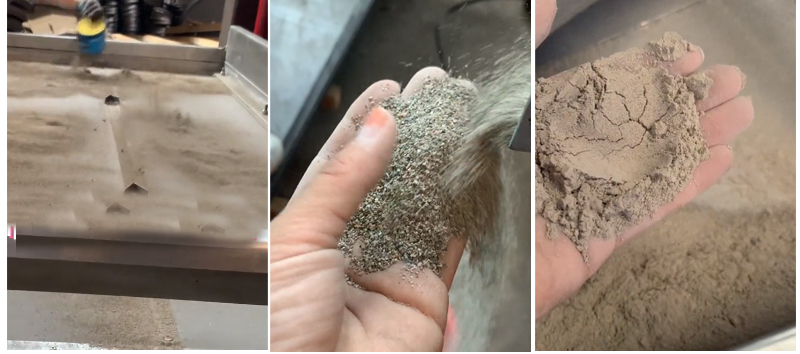
Sand for water filtration: used for water treatment, the mesh size is generally 20-60 mesh.
Sand for oil filtration: used for oil filtration, the mesh size is generally 80-120 mesh.
5. Sand for other industries
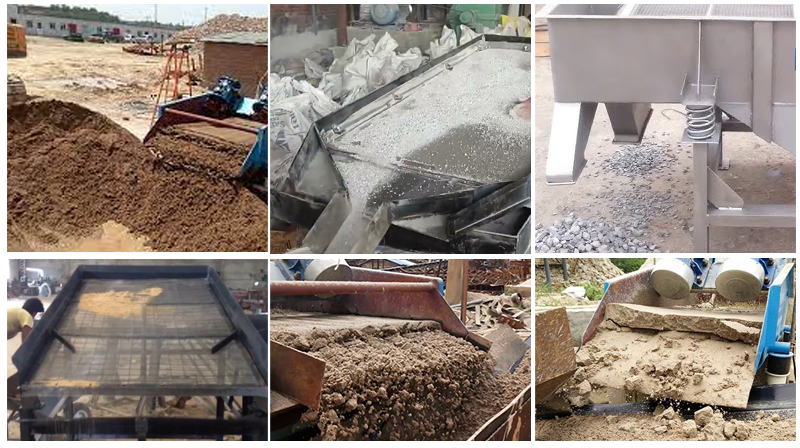
Sand for ceramics: the mesh size is determined according to the requirements of ceramic products, generally 80-200 mesh.
Sand for abrasives: the mesh size is generally finer, such as 400 mesh, 800 mesh, etc.
Address:China,Yanjin county forest park gate to the west 1000 meters north road.